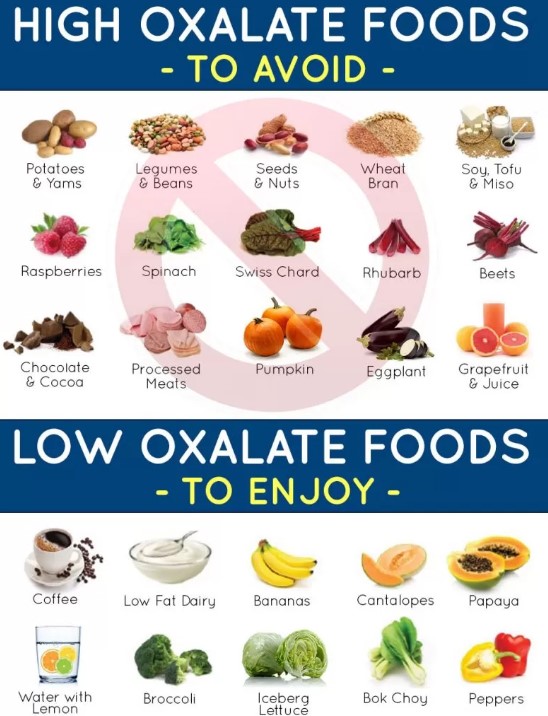BOURSESSENEGAL – Oxalate is a naturally occurring compound found in many foods and produced by the body. While it plays a role in various physiological processes, high levels can lead to health issues, particularly kidney stones. In this guide, we’ll explore what is, its sources, its effects on health, and how to manage your intake effectively.
What is Oxalate?
Oxalate, or oxalic acid, is an organic compound that occurs naturally in various plants. It forms salts when combined with minerals, such as calcium. While plays some roles in human health, excessive consumption can lead to problems. Understanding how functions in the body is essential for maintaining a balanced diet.
The Role of Oxalate in the Body
Oxalate can serve several purposes in the body. It may help in the metabolism of certain nutrients and act as a source of energy. However, the key concern arises when levels become too high, leading to potential health risks.
Sources of Oxalate in Food
High-Oxalate Foods
Certain foods contain high levels of oxalate. Being aware of these can help you manage your intake effectively. Here’s a list of common high-foods:
- Spinach: This leafy green is well-known for its high content.
- Rhubarb: Often used in desserts, rhubarb has significant levels of.
- Beets: Both the roots and greens are high in.
- Nuts: Almonds and cashews can contribute to your overall intake.
- Dark Chocolate: While delicious, dark chocolate also contains.
Low-Oxalate Foods
On the other hand, several foods are low in oxalate and can be safely included in your diet:
- Meat: Beef, chicken, and fish are naturally low in.
- Dairy: Milk, cheese, and yogurt contain minimal levels.
- Most Fruits: Apples, bananas, and berries typically have low content.
- Grains: Rice and oats are generally safe options.
The Health Effects of Oxalate
1. Kidney Stones
One of the most significant health concerns associated with oxalate is its link to kidney stones. When oxalate binds with calcium in the kidneys, it can form calcium crystals. These crystals can grow into stones, leading to severe pain and complications. Studies show that individuals with a history of kidney stones should monitor their intake closely.
2. Nutrient Absorption
Oxalate can interfere with the absorption of certain nutrients, particularly calcium and magnesium. When binds to these minerals in the gut, it reduces their bioavailability. This means that even if you’re consuming enough calcium-rich foods, high levels might hinder your body’s ability to absorb this vital mineral.
3. Gut Health
Some research suggests that oxalate may play a role in gut health. Certain gut bacteria can degrade , potentially reducing its levels in the body. However, a diet excessively high in could upset the balance of gut bacteria, leading to digestive issues.
Managing Oxalate Intake
1. Balanced Diet
Maintaining a balanced diet is crucial for managing oxalate levels. Focus on a variety of foods, ensuring you include low- options. This approach not only reduces intake but also supports overall health by providing essential nutrients.
2. Cooking Methods
Cooking can significantly affect the oxalate content of certain foods. Boiling vegetables like spinach can reduce their levels, as is water-soluble. By using cooking methods such as boiling or steaming, you can lower the content in high-foods.
3. Stay Hydrated
Staying well-hydrated can help reduce the risk of kidney stone formation. Drinking plenty of water dilutes the urine, reducing the concentration of and calcium, which helps prevent crystal formation.
4. Limit High-Oxalate Foods
If you have a history of kidney stones or other health issues related to oxalate, consider limiting your intake of high-foods. This doesn’t mean eliminating them completely, but moderation is key.
The Importance of Individual Needs
Consult a Healthcare Professional
Everyone’s tolerance to oxalate varies. Some individuals may consume high-foods without any issues, while others might experience problems. It’s essential to consult a healthcare professional, especially if you have existing health conditions or a history of kidney stones. They can help you develop a personalized dietary plan that suits your needs.
Listen to Your Body
Pay attention to how your body responds to different foods. If you notice symptoms like abdominal pain or changes in urine, it might be worth reevaluating your oxalate intake. Keeping a food diary can help you identify patterns and make informed choices.
Conclusion
Oxalate is a compound that can have both positive and negative effects on health. While it’s essential for certain bodily functions, excessive intake can lead to issues like kidney stones and nutrient absorption problems. Understanding what is, where it comes from, and how to manage its levels can significantly enhance your well-being.
By focusing on a balanced diet, monitoring your intake of high-oxalate foods, and staying hydrated, you can enjoy the benefits of a healthy lifestyle without the drawbacks of excess . Whether you’re managing kidney stone risk or simply seeking a balanced diet, being informed about will empower you to make healthier choices. Embrace this knowledge, and take charge of your health today!
REFERENCE : cor777



